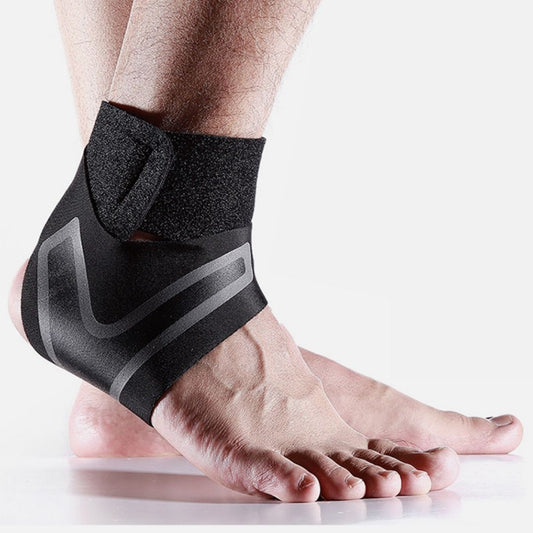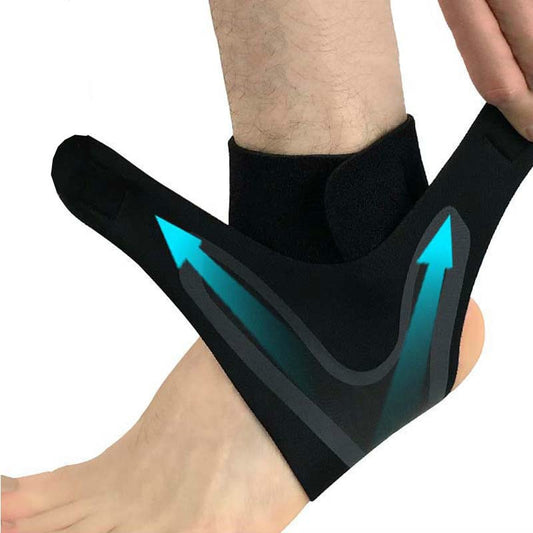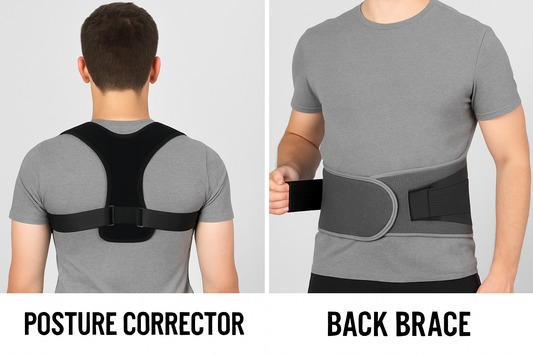One wrong step, a stumble, a twist, or a misstep off the curb, and your ankle gives way. The sharp pain hits, swelling quickly follows, and every step feels uncertain. Was it a sprain, a torn ligament, or something worse?
Knowing the difference isn’t just about naming the injury - it’s about getting the right care and healing properly. This guide will help you spot the signs and take the right steps toward recovery.
What is a Torn Ligament?
Ligaments are strong, fibrous bands that hold your bones together and keep your joints stable. When one is stretched too far or torn completely, it can bring sharp pain, make your ankle feel unstable, and limit your movement. Torn ligaments are often mistaken for simple sprains, since both involve ligament damage, but a full tear is usually far more serious.
Common Causes of Torn Ligaments
Torn ligaments often happen when the ankle is pushed beyond its normal range of motion. Understanding the common causes can help you prevent further injury and know what to watch out for.
- Sudden twisting movements: Happen when the ankle rolls or twists unexpectedly, such as landing awkwardly from a jump. The ligaments can stretch or tear when forced beyond their normal range of motion.
- High-impact sports injuries: Sports like football, basketball, and soccer involve quick changes in direction, jumping, or sudden stops, which put intense stress on the ankle ligaments and increase the risk of tears.
- Accidents or falls: Even outside sports, tripping or slipping while the foot is planted can shift the body’s weight suddenly, overstretching or rupturing the ankle ligaments.
Primary Symptoms of Torn Ligaments
Torn ligaments in the ankle can cause immediate and noticeable discomfort. Recognising the primary symptoms early is crucial for proper treatment and faster recovery.
- Severe pain immediately after injury, often sharper than with a mild sprain.
- Significant swelling and bruising usually develop within hours.
- Joint instability, where the ankle feels like it might give out when you put weight on it.
 What is a Sprained Ankle?
What is a Sprained Ankle?
A sprained ankle happens when the ligaments are stretched or partially torn but not fully ruptured. It’s one of the most common ankle injuries and can range from mild to severe depending on how much damage is done.
Common Causes of a Sprain
- Rolling or twisting the ankle on uneven surfaces.
- Sports activities that involve quick pivots, jumps, or sudden changes in direction.
- Improper footwear that doesn’t support the ankle well during activity.
Primary Symptoms of a Sprain
- Mild to moderate pain, especially when bearing weight.
- Swelling and tenderness around the outer ankle.
- Limited range of motion, with stiffness when trying to flex or rotate the foot.
 What is a Broken Ankle?
What is a Broken Ankle?
A broken ankle, or ankle fracture, occurs when one or more of the bones that make up the joint - the tibia, fibula, or talus - crack or break. Unlike sprains or ligament tears, a fracture is a structural injury to the bone itself.
Common Causes of Ankle Fractures
- High-impact trauma, such as car accidents or major falls.
- Sports injuries from landing awkwardly after a jump or collision.
- Sudden twisting or rolling, especially when combined with body weight.
Primary Symptoms of a Broken Ankle
- Intense, sharp pain, often worse than with soft tissue injuries.
- Visible deformity or misalignment of the ankle joint.
- Inability to bear weight at all, with immediate instability.
Key Differences in Symptoms
|
Feature |
Torn Ligament |
Sprained Ankle |
Broken Ankle |
|
Pain Intensity & Location |
Severe, deep pain around the joint |
Mild to moderate, localized to the ligament area |
Sharp, intense, often over the bone |
|
Swelling & Bruising |
Significant swelling, rapid bruising |
Moderate swelling, bruising near the ligament |
Severe swelling, widespread bruising |
|
Weight-Bearing Ability |
Difficult, ankle may give out |
Often possible but painful |
Usually impossible |
|
Visual/Audible Indicators |
Possible popping sound at the injury |
Popping or tearing sensation |
Cracking or snapping sound, visible deformity |
Diagnostic Methods for Ankle Injuries
Accurately diagnosing an ankle injury is the first step toward effective treatment. Understanding the available diagnostic methods helps ensure the right care and prevents further complications.
- Physical Examination: Doctors check tenderness, swelling, and range of motion.
- Imaging Tests: X-rays for fractures, MRIs for ligament tears, and CT scans for complex cases.
- Stress Tests: Performed carefully to assess joint stability and determine ligament involvement.
Treatment Options for Ankle Injuries
Treating an ankle injury promptly and correctly is key to a full recovery. Knowing the available treatment options can help you reduce pain, prevent further damage, and get back on your feet faster.
R.I.C.E. Protocol
- Rest: Avoid activities that put pressure on the ankle.
- Ice: Apply ice packs for 15–20 minutes at a time to reduce swelling.
- Compression: Use elastic bandages or sleeves to provide gentle support.
- Elevation: Keep the ankle raised above heart level to minimize inflammation.
Treatment for Torn Ligaments and Sprains
- Conservative Treatment: Bracing, physical therapy, and gradual return to activity.
- Surgical Options (for Severe Tears): In cases of complete rupture, surgery may be needed to repair or reconstruct the ligament.
Treatment for Broken Ankles
- Non-Surgical Treatment: Casting or boots to immobilize the joint and allow bones to heal.
- Surgical Treatment: Realignment with screws, plates, or rods in severe or unstable fractures.
Recovery Timeline
|
Injury Type |
Typical Recovery Time |
|
Sprained Ankle (Mild–Moderate) |
1–6 weeks |
|
Torn Ligament (Severe) |
8–12+ weeks (may require rehab) |
|
Broken Ankle |
6–12+ weeks, depending on severity and treatment |
 When to See a Doctor for an Ankle Injury
When to See a Doctor for an Ankle Injury
Seek Immediate Medical Attention If:
- You cannot put any weight on the ankle.
- You notice a visible deformity.
- Swelling and bruising worsen quickly.
- You heard a crack or snap at the time of injury.
Also, Consider a Medical Evaluation If:
- Pain lingers for more than a few days.
- You experience recurring instability.
- You have a history of ankle injuries and notice worsening symptoms.
Preventing Ankle Injuries
- Proper Footwear: Choose shoes that provide support and cushioning.
- Strengthening Exercises: Build ankle and leg muscles to enhance stability.
- Activity Modification: Warm up before workouts and avoid high-risk movements on unstable ground.
Frequently Asked Questions
1. How can I tell if my ankle is broken or just sprained?
A broken ankle often causes sharp, localized pain over the bone, visible deformity, and inability to bear weight. A sprain usually affects soft tissue and may still allow limited movement. Only imaging can confirm for sure.
2. Can I walk on a sprained ankle or torn ligament?
Sometimes yes, but it’s not advised. Walking on an injured ankle can make the damage worse and delay healing.
3. How long does it take for a torn ligament in the ankle to heal?
Mild tears may improve in a few weeks with rest and therapy, but severe ligament tears can take 3 months or longer, especially if surgery is needed.








